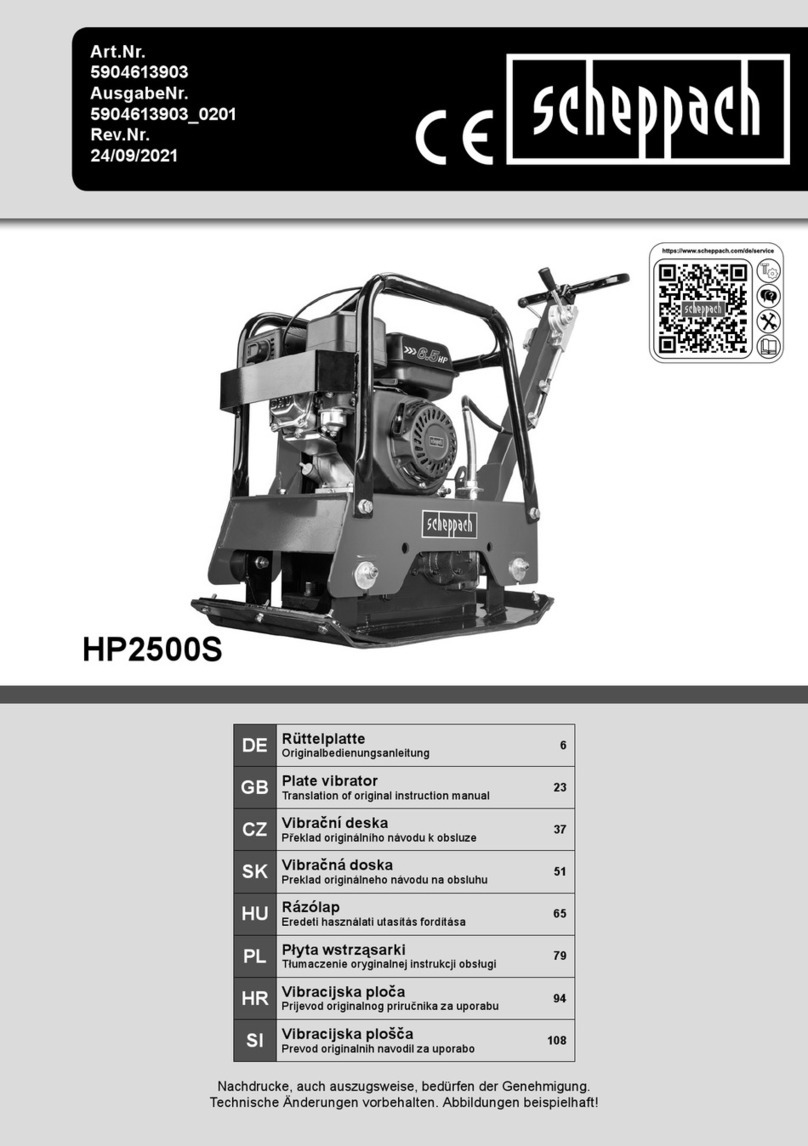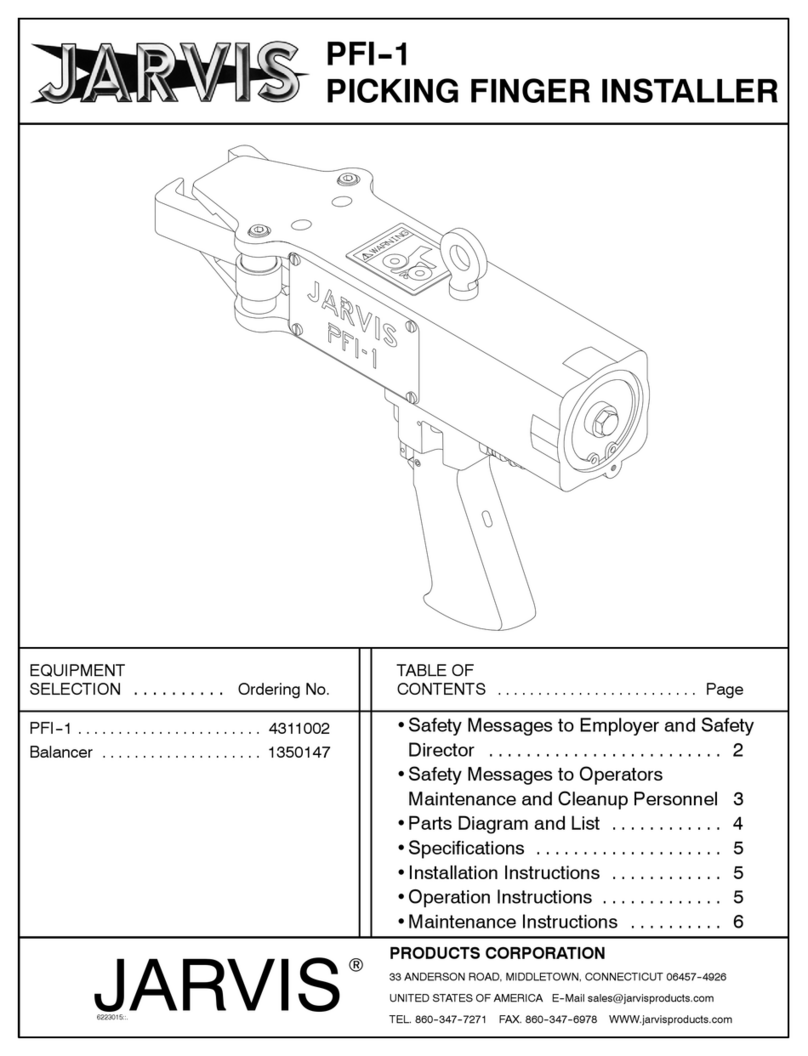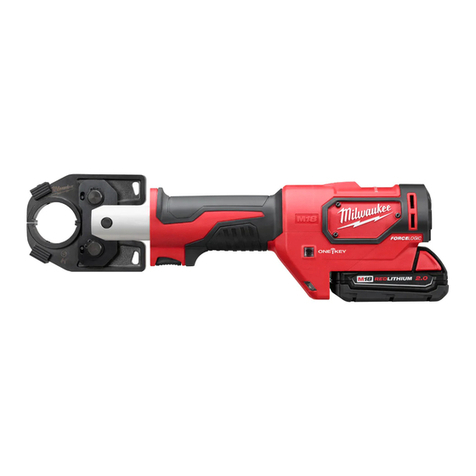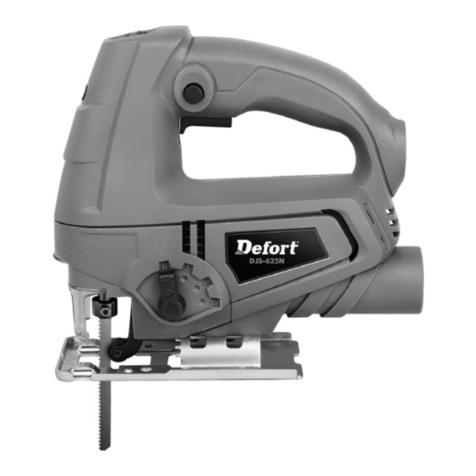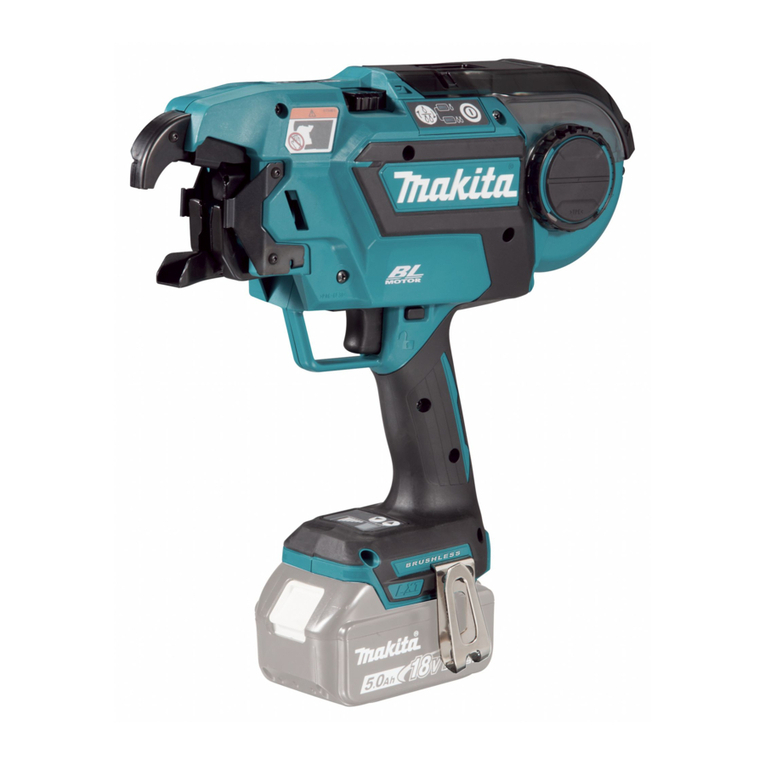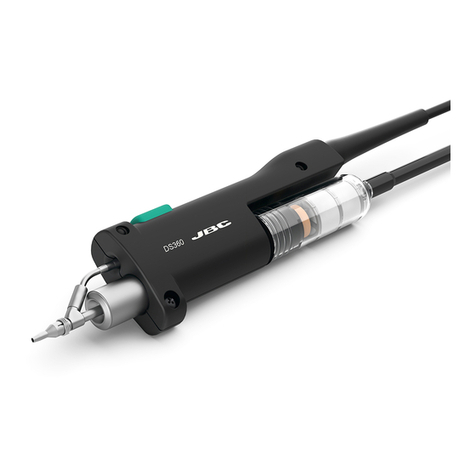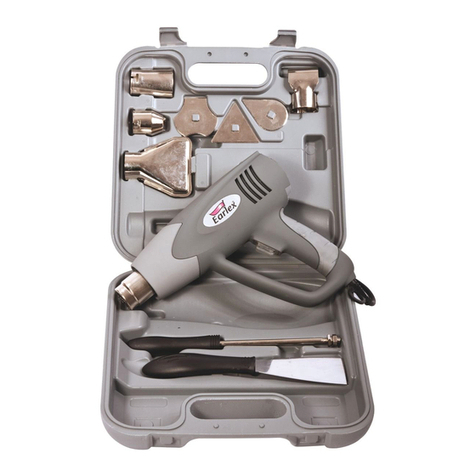Mäktig 803010 User manual

ABRASIVE BLASTER
MACHINE DE SABLAGE À JET
10 GALLONS - #803010
20 GALLONS - #803020
Please read these instructions carefully before using the product. Protect yourself and others by observing all safety information, warnings,
and cautions. Failure to comply with instructions could result in severe personal injury and/or damage to product or property. Please retain
instructions for future reference. This is a general service instruction sheet. All specifications as detailed in this sheet may not match your
product exactly.
Veuillez lire soigneusement ces instructions avant d’utiliser le produit. Protégez vous et votre entourage en observant les avertissements,
mises en garde et instructions de sécurité; tout manquement pourrait entraîner des blessures graves et/ou des dommages matériels.
Conservez les instructions pour référence ultérieure. Ceci est un feuillet d’instructions général. Les spécifications détaillées ici pourraient
différer du produit réel.
INSTRUCTIONS

READ ALL INSTRUCTIONS
WARRANTY
This product has a limited one year warranty
covering manufacturing defects. If you have a
product that does not work correctly within a
year from the date of purchase, take the
product and the original receipt to your dealer
for repair, replacement or credit. Consumable
items and wear item, such as tips and hoses
are not covered under warranty.
Before returning any product, you must contact
your dealer to acquire a Return Authorization
Number.
When sending your product you must include:
1. A copy of the dated store receipt showing
the original purchase,
2. Name of store and town where product
was purchased,
3. The type of defect (I.E. leaking tank, etc.)
4. Your full name, street address and
Contact information.
We will examine the product. If the problem is
due to a manufacturing defect, we will repair
the product at no charge and return it to you. If
we cannot repair it then it will be replaced. If the
problem is due to misuse, abuse, the product
has been modified or out of warranty, we will
contact you with a repair estimate.
Invoice #: _____________________________
BEFORE OPERATING
SAVE THESE INSTRUCTIONS
Thank you for purchasing this Mäktig Abrasive
Blaster. Before attempting to operate your new
blaster please read these instructions thoroughly.
You will need these instructions for the safety
warnings, precautions, assembly, operation,
maintenance procedures, parts list and diagrams.
Keep your invoice with these instructions. Write
the invoice number on the inside of front cover.
Keep the instructions and invoice in a safe, dry
place for future reference.
WARNING: The warnings, cautions and
instructions discussed in this instruction manual
cannot cover all possible conditions or situations
that could occur. It must be understood by the
operator that common sense and caution are
factors which cannot be built into this product, but
must be supplied by the operator.
TABLE OF CONTENTS
Description Page #
Warranty.............................................. ..1
Safety rules ........................................ ...1-2
Assembly.............................................. .2
Operation... ........................................... .3
Maintenance... .................................... ..4
Abrasive Selection............................... ..4
Parts List and Diagrams... .................. ..5-6
SAFETY RULES
1. Do not use any sand or silica based abrasives
with this tool. Silica based abrasives have been
linked to severe respiratory disease. Always use
OSHA recommended abrasives.
2. Know your tool. Read this manual carefully. Lea
the tool’s applications and limitations, as well as
potential hazards specific to it.
3. Do not expose tool to moisture. Don’t use this
tool damp or wet locations. Keep out of rain.
1

4. Keep work area clean and well lit. Cluttered or
dark work areas invite accidents.
5. Keep children away. All children should be kept
away from the work area. Never let a child
handle a tool without strict adult supervision.
6. Do not operate this tool if under the influence of
alcohol or drugs. Read warning labels on
prescriptions to determine if your judgment or
reflexes are impaired while taking drugs. If there is
any doubt, do not attempt to operate.
7. Use safety equipment. Eye protection should be
worn at all times when operating this tool. Use
ANSI approved safety glasses. Everyday eye-
glasses are NOT safety glasses. Dust mask, non-
skid safety shoes, hard hat, or hearing protection
should be used in appropriate conditions.
8. Wear proper apparel. Loose clothing, gloves,
neckties, rings, bracelets, or other jewelry may
present a potential hazard when operating this
tool. Please keep all apparel clear of the tool.
9. Don’t overreach. Keep proper footing and
balance at all times when operating this product.
10. Always disconnect the tool from air supply and
release pressure from the tank before making any
adjustments, storing, servicing, or changing
accessories. Such preventative safety measures
reduce the risk of starting the tool accidentally.
11. Use clamps or other practical means to secure
and support the work piece to a stable platform.
Holding the work by hand or against your body
may lead to a loss of control.
12. Do not force tool. Use the correct tool for your
application. The correct tool will do the job better
and safer at the rate for which it was designed.
13. Check for damage. Check your tool regularly. If
part of the tool is damaged it should be carefully
inspected to make sure that it can perform its’
intended function correctly. If in doubt, the part
should be repaired. Refer all servicing to a
qualified technician. Consult your dealer for advice.
14. Keep away from flammables. Do not attempt to
operate this tool near flammable materials or
combustibles. Failure to comply may cause
serious injury or death.
15. Always check to make sure that the trigger is not
on before connecting blaster to air supply. Tool
may cause damage to property or person if
plugged in while on.
16. Store idle tools out of the reach of children and
untrained persons. Tools may be dangerous in
the hands of untrained users.
17. Drain water trap periodically during use. Do not
allow moisture to fill more than 1/2 the water trap
bowl. Do not leave water standing in water trap
when done with work.
18. Do not allow abrasive blaster to sit pressurized
while unattended or not in use.
19. Make sure all equipment is rated to the
appropriate capacity. Make sure regulator is set
at no higher than 125 psi.
20. Periodically check the abrasive medium delivery
equipment. Valves, hoses and nozzles that carry
the abrasive medium after it leaves the pressure
tank are subjected to the abrasive blasting action
so will wear out more quickly than other
components.
21. Release the air pressure in the tank before
opening. See "Releasing Pressure from the
Tank" section. Make sure pressure gauge reads
“0” before opening the tank. Do not attempt any
maintenance on the abrasive blaster until the
pressure gauge reads “0”, and it has been
disconnected from air supply.
22. Maintain correct air pressure whenever working.
Do not allow pressure to exceed 125 psi. If the
safety valve does not release excess air
pressure, stop all work and release pressure
from the tank (see "Releasing Pressure from the
Tank" section).
AIR/ABRASIVE SUPPLY REQUIREMENTS
Hose Hose Nozzle Compressor CFM@ Abrasive
ID L ID HP 125 psi Use/Hr
3/8 50 ft 2 2 6 30 lbs.
3/8 25 ft. 2.5 4 12 80 lbs.
1/2 50 ft. 3 7 20 120 lbs.
1-1/2 15 ft. 3.5 10 25 150 lbs.
ASSEMBLY
Note: Use Teflon pipe tape on all threaded joints.
Make sure all joints are securely tightened.
Abrasive Safety Trigger Assembly (Figure 1)
1. Slide the two Hose Clamps (24), over each end
of the Abrasive Hose (25).
2. Press one end of the hose, over the nipple on the
Abrasive Outlet Pipe (23), and the other end over the
Abrasive Safety Trigger Hose Adapter (49).
3. Both hose ends should be firmly seated on the
nipples. Slide the hose clamps along the hose to
each nipple and tighten the clamps very firmly.
They have to resist the force of 60 to 125 PSI.
Figure 1
2

Handlebars, Wheels and Foot Assembly
(Figure 2)
1. Lay the Abrasive Blast Tank on a flat level
surface (such as a workbench or table top), with
the handlebar mounting brackets facing up.
2. Align the 4 holes in the Handlebar (06) with the
four holes in the handlebar mounting brackets.
Note: Keep the curved end of the handle facing
upward.
3. Place a Washer (10) onto each of the four
handlebar mounting Screws (08) and insert
them through each of the four holes.
4. Place a nut (09) onto the end of each screw and
firmly tighten with a wrench.
5. Locate the Wheel Axle (05) and slide it through
the axle holes located at the bottom of the
handlebar.
6. Slide a wheel Washer (26) onto each end of
the wheel axle.
7. Slide a Wheel (02) onto each end of the
wheel axle.
8. Slide a wheel Washer (26) onto each end of the
wheel axle.
9. Using snap ring pliers, install a Snap Ring (47)
onto each end of the wheel axle. Note: Wheel
axle has a groove cut into it - snap ring should
rest in this groove so it will not slide off the
wheel axle.
10. Firmly snap Wheel Lids (48) into place on
wheels.
11. Roll Abrasive Blast Tank over so that handle is
now facing down.
12. Align the holes of the Front Foot (04) with the
holes in the foot mount on the front side of the
Blast Tank.
13. Insert a Cotter Pin (03) through the holes and
bend it so the Front Foot cannot slide off the
foot mount.
Figure 2
OPERATION
! Warning: Always wear your hood, dust mask
and heavy duty canvas gloves when operating
the abrasive blaster.
! Warning: Before operating your abrasive blaster,
inspect each connection, double checking to
make sure that all are tight and properly sealed.
! WARNING: THIS MACHINE IS NOT
INTENDED FOR USE WITH SILICA
BASED ABRASIVES. SILICA BASED
ABRASIVES HAVE BEEN LINKED TO
SEVERE RESPIRATORY DISEASE.
ALWAYS USE SILICA SUBSTITUTES
(SUCH AS - GLASS BEAD - RED
GARNET) WHEN ABRASIVE BLASTING!
Loading Abrasive
1. Check to make sure the abrasive is dry and
clean so that it does not clog the unit.
2. Close the brass Air Supply Valve (19) by turning
it to the vertical position.
3. To release the pressure from the Tank, press
Safety Trigger until air stops.
4. Make sure the Pressure Gauge (16) reads “0”.
5. Remove the Filler Cap (13).
6. Using the Funnel (27), pour the selected abrasive
media into the tank (1). Do not fill the tank more
than 3/4 full. If humidity in your region is 90% or
more, only fill the tank half full and check the
water trap (18) more frequently.
7. Close the Filler Cap securely, assuring O-ring is
in place.
Note: Place your air compressor in another room to
prevent damage to it.
To Start Abrasive Blasting
Note: Start with all valves in the closed position.
Following the instructions below will help prevent
the formation of clogs in the abrasive hose, outlet
manifold and the safety trigger.
1. Connect air compressor to the Inlet Connector (20).
2. Start compressor and open Air Supply Valve (19).
3. Open Throttling Valve (19A).
4. Check for leaks at the Filler Cap and along all
hoses and fittings as the system pressurizes. If
leaks are observed, release the pressure from
the tank and repair immediately.
5. Point Safety Trigger in a safe direction away from
people, pets or anything around you that may be
damaged by direct or indirect abrasive spray.
6. Press and hold Safety Trigger until air is flowing
through the trigger.
3

7. With the Safety Trigger open, slowly open the
Abrasive Control Valve (19B) until abrasive
material begins to flow out of the Safety Trigger.
8. Adjust the Abrasive Control Valve (19B) until the
desired amount of abrasive material is flowing
through the Safety Trigger.
9. Begin blasting.
To Stop Blasting
1. While continuing to press and hold the Safety
Trigger, turn the Abrasive Control Valve (19B) to
the closed position (this is to prevent any
clogging.)
2. When you notice only air (no abrasive) is
coming out of the Safety Trigger, you can stop
the air flow by releasing the trigger. By doing
this you are ensuring a clean and clog-free
manifold, hose, and safety trigger.
Releasing Pressure from the Tank
1. When finished blasting, point Safety Trigger in a
safe direction away from people, pets or
anything around you that may be damaged by
direct or indirect abrasive spray.
2. Press and hold the Safety Trigger to expel any
remaining abrasive material from the Abrasive
Hose (25).
3. Close the Abrasive Control Valve (19B).
4. Release pressure on the Safety Trigger.
5. Close the Throttling Valve (19A) and the Air
Supply Valve (19).
6. Disconnect air supply hose from abrasive blaster.
7. Press the Safety Trigger until air stops flowing
and Pressure Gauge (16) reads “0".
MAINTENANCE
1. Keep your abrasive blaster clean, and protect it
from damage.
2. Release pressure from the tank after each use.
3. When initially pressurizing, check for leaks at
the tank top and at all hoses and fittings.
Leaking joints may be repaired by replacing
worn or damaged parts and Teflon tape at joints.
4. Check for worn abrasive hose and fittings. The
Abrasive Control Valve, manifold, and all parts after
the abrasive is ejected from the tank are subject to
rapid wear due to the flow of abrasive. Watch
especially for leaks, blistering, bulging or thinness
of the hose. Replace any parts which appear worn.
ABRASIVE SELECTION
The kind of abrasive you choose will greatly influence
the amount of time needed to clean a given surface
area. Abrasive materials include garnet, glass beads
and others. For best results, use 80 grit abrasive or
finer. Do not exceed 80 grit media size.
Abrasive Media Quick Reference Guide
Red Garnet
Hardness: 8
Red Garnet is good for general metal usage.
Ideal for general rust, paint and scale removal
from metal parts.
Glass Bead
Hardness: 6
Perfect for light deburring or applying satin-like
finishes on parts. Round shape of glass bead
keeps it from cutting into work surfaces; instead
the surface is pounded or “peened.”
• Make sure that the abrasive you use is
thoroughly dry. Damp abrasive can cause
clogging of your abrasive blaster.
• While you may reuse abrasive, remember that
abrasive does wear out. After use, abrasive
becomes smoother and rounder, thus reducing
abrasive effectiveness.
• Reusing abrasive may also cause clogging due
to debris contained in the mixture from prior use.
Abrasive Flow Adjustment
• Choose a larger nozzle for a broader spray
pattern. Choose a smaller nozzle for more
focused abrasive blasting.
• Adjust air pressure with the Brass Throttling
Valve (19A). Adjust abrasive flow with Abrasive
Control Valve (19B).
• Watch for abrasive clogging. Release pressure
from the tank if necessary and replace the
abrasive with drier or cleaner abrasive.
Safety and Health Considerations
! WARNING: THIS MACHINE IS NOT
INTENDED FOR USE WITH SILICA
BASED ABRASIVES. SILICA BASED
ABRASIVES HAVE BEEN LINKED TO
SEVERE RESPIRATORY DISEASE.
ALWAYS USE SILICA SUBSTITUTES
(SUCH AS - GLASS BEAD OR RED
GARNET) WHEN ABRASIVE BLASTING!
• Before opening tank make sure that it is not
pressurized. Be sure that the gauge reads “0”.
If the gauge does not read “0”, release pressure
from the tank (see “Releasing Pressure from the
Tank” section).
• Disconnect the compressor before opening tank.
• Protect yourself and those around you from
“over-spray”. Remember that your portable
abrasive blaster is shooting a powerful spray of
abrasive material. Do not point it at yourself or
anyone around you.
4

• Wear protective clothing including hood (28),
safety eye covering, and heavy gloves when
using this abrasive blaster.
• Wear a filter or mask over your mouth when
using this tool. You will create a cloud of abrasive
material and debris which is dangerous to inhale.
• Remove, cover or protect anything around you that
might be damaged from direct or indirect contact
with the abrasive spray or particles. Nothing
subject to contamination damage or with a fine
surface should be near your abrasive blaster.
Caution
Pay particular attention to the Abrasive Hose (25),
the Abrasive Control Valve (19B), and the Nozzles
(35) as they will wear out much more quickly than
the other pieces.
The Abrasive Hose needs to be replaced
immediately if its side walls develop leaks or show
blisters in the surface. Do not use if any of these
problems are present.
PARTS LIST
Item Description Qty. Item Description Qty.
1 Tank 1 24 Hose Clamp 2
2 Wheels 2 25 Abrasive hose 1
3 Cotter Pins 1 26 Wheel Washer 4
4 Front Foot 1 27 Funnel 1
5 Wheel Axle 1 28 Hood 1
6 Handlebar 1 29 Body Upper 1
7 Handle Grip 1 30 Body Lower 1
8 Screw 4 31 Metal Pipe 1
9 Hex Nut 4 32 Intake Connector 1
10 Washer 4 33 Adaptor 1
11 Safety Valve 1 34 Gasket 1
12 O-Ring 1 35 Ceramic Nozzle 4
13 Filler Cap 1 36 Rubber Adaptor 4
14 Joint Pipe 1 37 Nozzle Cap Nut 1
15 Intake Manifold 1 38 Screw ST 4.2 x 16 4
16 Pressure Gauge 1 39 Screw ST 4.2 x 12 2
17 Nipple Connector 4 40 On/Off Control Lever 1
18 Water Trap Filter 1 41 Spring Pin 1
19 Brass Air Supply Valve 3/8" 1 42 Spring 1
19A Brass Throttling Valve 3/8" 1 43 Rubber Pad 1
19B Abrasive Control Valve 3/8" 1 44 Screw M3 x 25 1
20 Inlet Connector 1 45 Hard Alloy Pad 1
21 Nipple Connector 1 46 Nut M3 1
22 Air Hose 1 47 Snap Ring 2
23 Abrasive Outlet Pipe 1 48 Wheel Lids 2
49 Hose Adaptor 1
5

PARTS DIAGRAM
THIS PARTS LIST AND LINE
DRAWING ARE FOR
REFERENCE ONLY.
THIS TOOL CAN ONLY BE
SERVICED AT AN
AUTHORIZED REPAIR
FACILITY.
6
This manual suits for next models
1
Table of contents
Popular Power Tools manuals by other brands
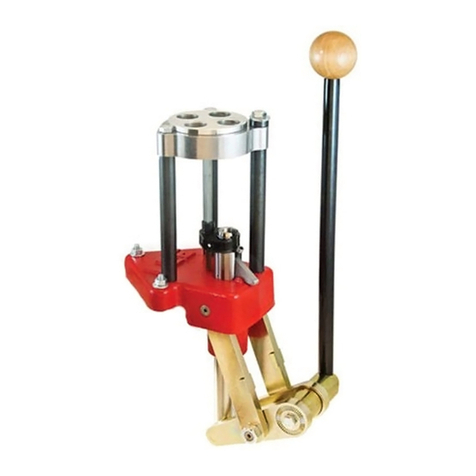
Lee Precision
Lee Precision Classic Turret Press Complete instructions

Roller
Roller Axial-Press 25 22 V ACC instruction manual
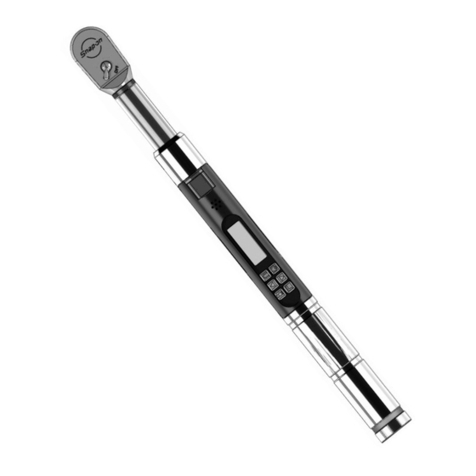
Snap-On
Snap-On ControlTech Micro CALIBRATION PROCEDURE
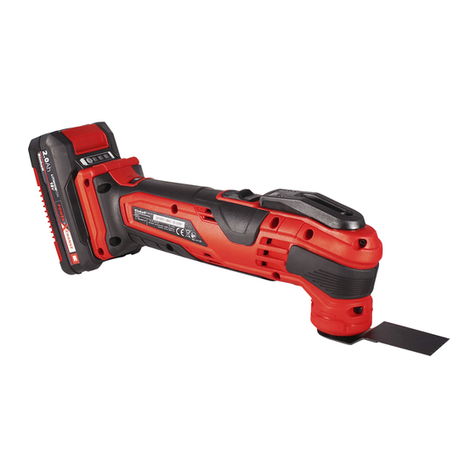
EINHELL
EINHELL VARRITO Original Operating Instruction

Huck
Huck 201 instruction manual
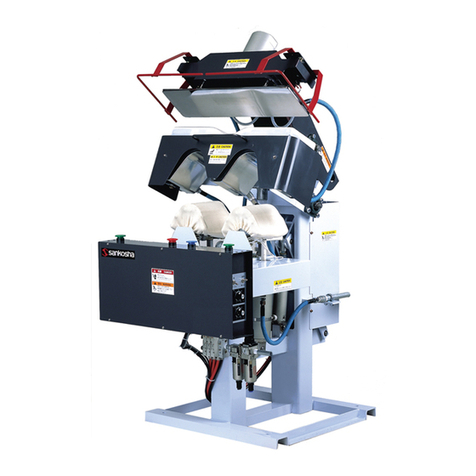
Sankosha
Sankosha LP-660E-V2 instruction manual
